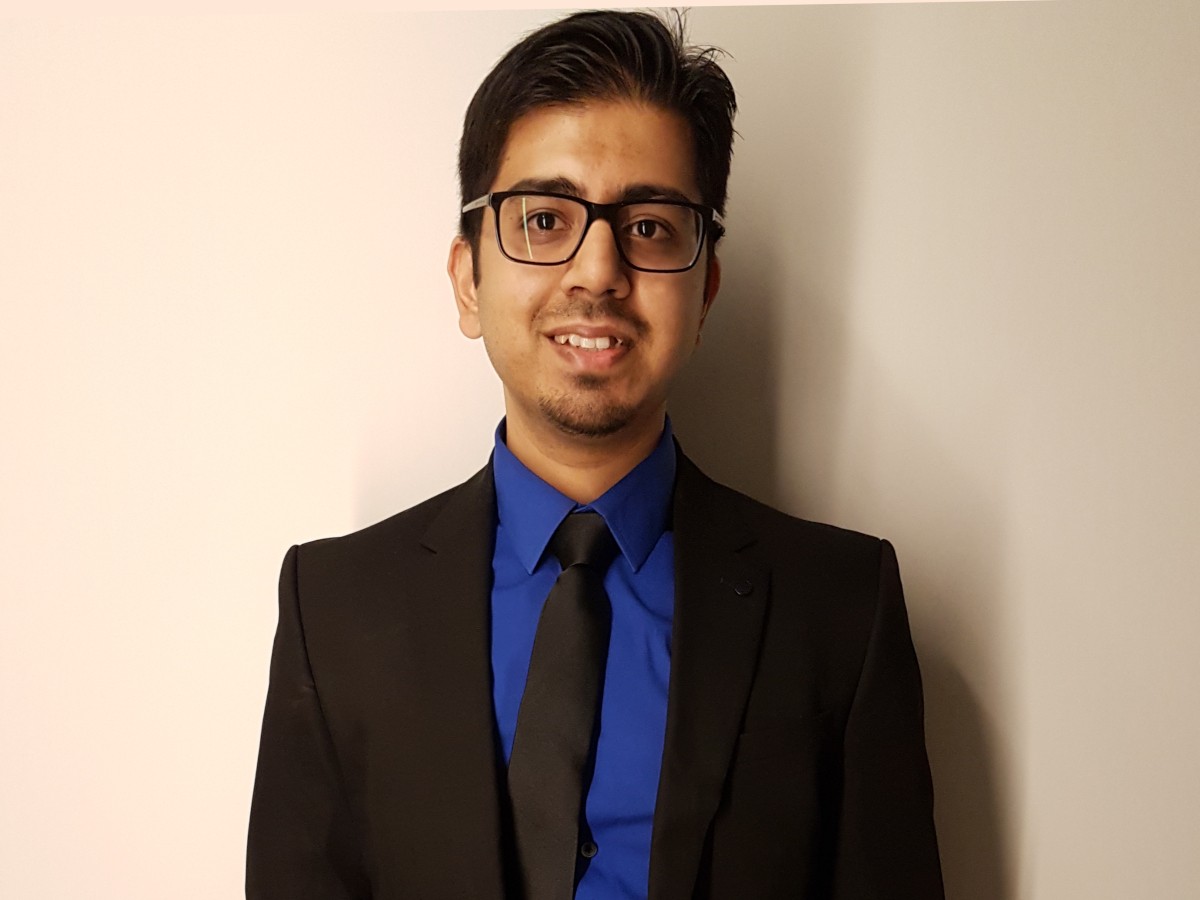Dr. Owais Khan

Areas of Academic Interest
Cardiovascular biomechanics
Computational fluid dynamics
Medical imaging
Education
| Year | University | Degree |
|---|---|---|
| 2017 | University of Toronto | PhD |
| 2013 | University of Toronto | MASc |
| 2011 | University of Toronto | BASc |
Courses Taught
| Course Code | Course |
|---|---|
| BME 639 | Control Systems and Bio-robotics |
Spotlight
Every year, nearly one million people die from heart disease in North America. Meanwhile, heart disease treatment, such as heart surgery or valve prosthesis, can lead to long-term complications or death.
Owais Khan’s research in cardiovascular biomechanics aims to improve those health outcomes. Using anatomy models, computational simulations and medical imaging, Khan’s developing methods to better diagnose heart disease and design treatment strategies based on engineering principles. “Heart failure is a serious issue in Canada and around the world,” says Khan. “I want to personalize heart surgeries for patients in a way that achieves better outcomes” says Khan.
While taking a fluid mechanics course during his bachelor's in mechanical engineering, Khan realized how engineering can play an integral role in cardiovascular medicine, which inspired him to make the switch to biomedical engineering. As an engineer, he realized he could bring a unique perspective and work alongside doctors, surgeons and clinicians to make a lasting impact. “In biomedical engineering, I can do something that’s never been done before and make an impact in someone’s life,” says Khan. “That’s what really drives me.”
“Biomedical engineering brings you one step closer to solving some of medicine’s most challenging problems.”
- American Heart Association Postdoctoral Fellowship
- NSERC Postdoctoral Fellowship
- Baxter Young Investigator Award
- MITACS Globalink Research Award
- Khan, MO, et al. "On the quantification and visualization of transient periodic instabilities in pulsatile flows." Journal of biomechanics 52 (2017): 179-182.
- Khan, MO et al. "Association between aneurysm hemodynamics and wall enhancement on 3D vessel wall MRI." Journal of Neurosurgery 1.aop (2020): 1-11.
- Khan, M. O., D. A. Steinman, and K. Valen‐Sendstad. "Non‐Newtonian versus numerical rheology: Practical impact of shear‐thinning on the prediction of stable and unstable flows in intracranial aneurysms." International journal for numerical methods in biomedical engineering 33.7 (2017): e2836.
- Khan, M. O., K. Valen-Sendstad, and D. A. Steinman. "Direct numerical simulation of laminar-turbulent transition in a non-axisymmetric stenosis model for newtonian vs. shear-thinning non-newtonian rheologies." Flow, Turbulence and Combustion102.1 (2019): 43-72.
- Khan, M. O., K. Valen-Sendstad, and D. A. Steinman. "Narrowing the expertise gap for predicting intracranial aneurysm hemodynamics: impact of solver numerics versus mesh and time-step resolution." American Journal of Neuroradiology 36.7 (2015): 1310-1316.